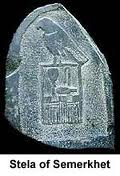It looks like you're using an Ad Blocker.
Please white-list or disable AboveTopSecret.com in your ad-blocking tool.
Thank you.
Some features of ATS will be disabled while you continue to use an ad-blocker.
share:
reply to post by beansidhe
I have been eyeballing this here "cartouche" deal from the day it was posted. Particularly what looks like the Egyptian hieroglyphic hand their in the box.
Hieroglyph
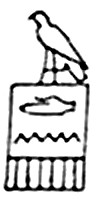
The below is said to be of the Greco-Roman period style.

Note hand glyph in box of Hecate cartouche.....which is really identical with the Egyptian style.
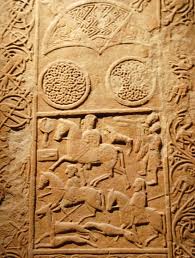
The hand glyph has a value or "d". It can also be used a logogram.
From above link...
So we see that the use here of the hand is in context.
This could be a cartouche with hand added to signify "leading" or action at "this hand" in a personal way. Whatever the subject here.....it leads or takes action.
I have been eyeballing this here "cartouche" deal from the day it was posted. Particularly what looks like the Egyptian hieroglyphic hand their in the box.
The Hand as hieroglyphic also forms the word for 'hand' in the Ancient Egyptian hieroglyphic language: "ţet." In line 13, (R-13), one of ten ways for honoring the Pharaoh Ptolemy V was to:
Hieroglyph

The below is said to be of the Greco-Roman period style.

Note hand glyph in box of Hecate cartouche.....which is really identical with the Egyptian style.

The hand glyph has a value or "d". It can also be used a logogram.
From above link...
there is use of the Hand-hieroglyph as part of an important word that implies the use of 'hands', or 'action'. In speaking of the district, or town that defiled Pharaoh, and had to be defeated, the town is referred to as: ...(the rebels) "they led astray-(Hand hieroglyph: seţeman-sen) the nomes."[
So we see that the use here of the hand is in context.
This could be a cartouche with hand added to signify "leading" or action at "this hand" in a personal way. Whatever the subject here.....it leads or takes action.
reply to post by Logarock
Good catch, there!
I've had a look at some other images of the stone, and it appears that the stone is chipped:
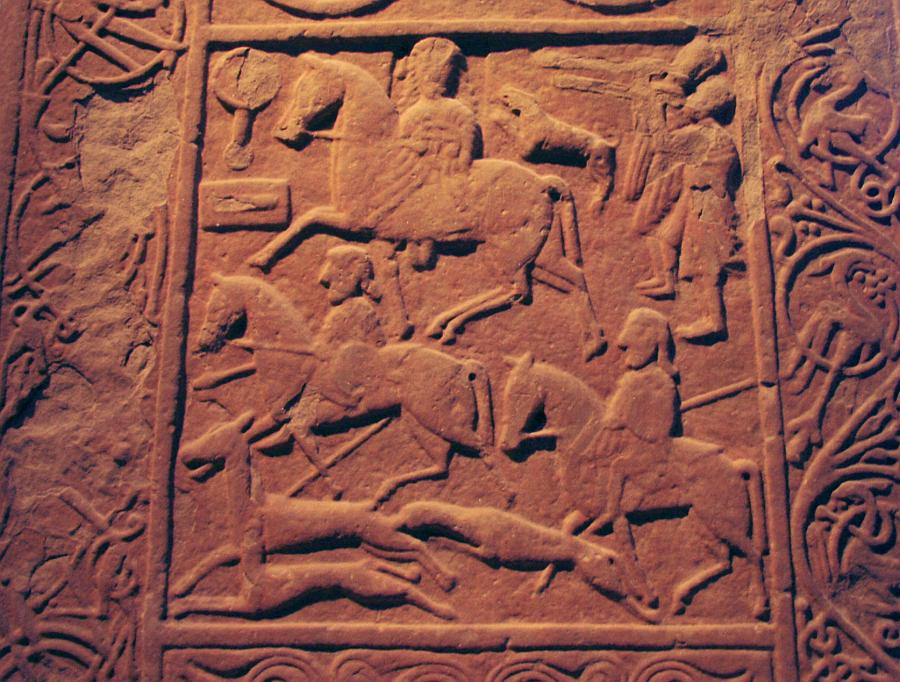
But prior to it being chipped (deliberately??? lol!), there was without doubt something carved in relief there. I hadn't noticed it before. Given all you have just written above, I'm happy to agree that that could easily have been the hand glyph - it's the same shape, after all.
Also, the mirrors. Out of 80 stones with mirrors, only around 13 class 2 have them. They became less common on the 'later' stones. They feature predominantly on the older, more 'magical' stones such as these:
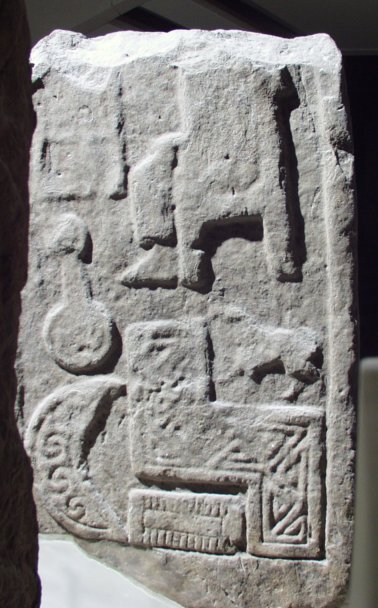
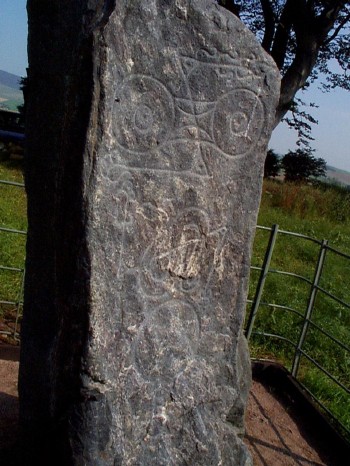
So let's stay with a lunar, reflective, feminine meaning because there's nothing obvious to contradict that at the moment.
Also, for those who haven't seen it from earlier, does anyone recognise this helmet?
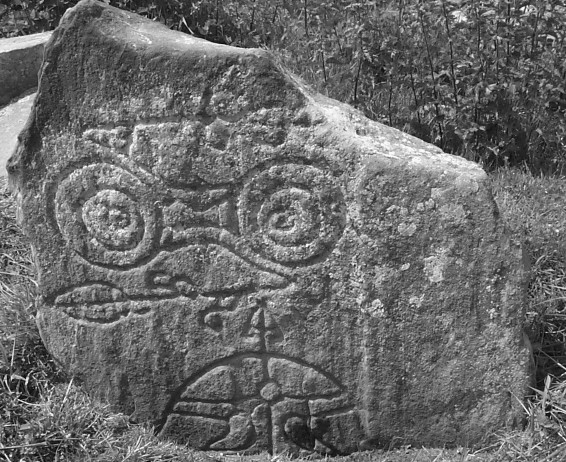
Good catch, there!
I've had a look at some other images of the stone, and it appears that the stone is chipped:

But prior to it being chipped (deliberately??? lol!), there was without doubt something carved in relief there. I hadn't noticed it before. Given all you have just written above, I'm happy to agree that that could easily have been the hand glyph - it's the same shape, after all.
Also, the mirrors. Out of 80 stones with mirrors, only around 13 class 2 have them. They became less common on the 'later' stones. They feature predominantly on the older, more 'magical' stones such as these:


So let's stay with a lunar, reflective, feminine meaning because there's nothing obvious to contradict that at the moment.
Also, for those who haven't seen it from earlier, does anyone recognise this helmet?

Oh and the other thing I meant to say - isn't that the Rose Cross in the 'cauldron? :
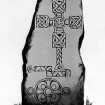

reply to post by beansidhe
That chip may change things. Couldn't see it without the blow up.
That chip may change things. Couldn't see it without the blow up.
edit on 29-3-2014 by Logarock because: n
reply to post by Logarock
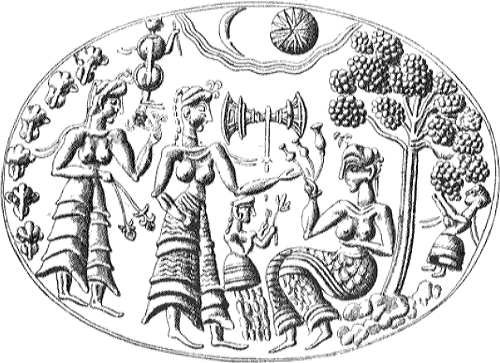
Here is something upper left corner. Subject is Demeter.

Here is something upper left corner. Subject is Demeter.
edit on 29-3-2014 by Logarock because: n
reply to post by Logarock
The chip -yes, no, yes - not sure. Something was on that stone, and it was pretty close to a hand hieroglyph.
Do you know what that thing is in the top left?
I've been examining celtic helmets, and not found a match yet, but there's loads, so I'm still hopeful.
The chip -yes, no, yes - not sure. Something was on that stone, and it was pretty close to a hand hieroglyph.
Do you know what that thing is in the top left?
I've been examining celtic helmets, and not found a match yet, but there's loads, so I'm still hopeful.
beansidhe
reply to post by Logarock
Also, the mirrors. Out of 80 stones with mirrors....
So let's stay with a lunar, reflective, feminine meaning because there's nothing obvious to contradict that at the moment.
Also, for those who haven't seen it from earlier, does anyone recognise this helmet?
These things above are just to much like eyes. Like she is watching all.
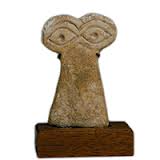
Southwest US "copper country"
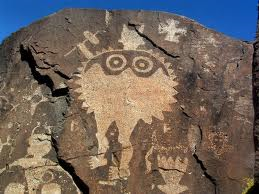
reply to post by Logarock
I can't see them as anything other than eyes now! Woah, I'd never noticed!
In Semerkhet's cartouche that looks like a hand and a mirror and an eagle/raven on top.
I can't see them as anything other than eyes now! Woah, I'd never noticed!
In Semerkhet's cartouche that looks like a hand and a mirror and an eagle/raven on top.
reply to post by Logarock
Eek! We're on the radio, lol!!
ATS
(A bit awkward, since we haven't actually deciphered them yet - lol!)
Eek! We're on the radio, lol!!
ATS
(A bit awkward, since we haven't actually deciphered them yet - lol!)
edit on 29-3-2014 by beansidhe because: (no reason given)
reply to post by beansidhe
We did. The stone with the smithy tools ect. We got that one anyway.
Well I have missed the show it would appear.
No in fact I tuned in just in time to catch the night watchman playing in the lab. No! Careful with that ax Eugene!
We did. The stone with the smithy tools ect. We got that one anyway.
Well I have missed the show it would appear.
No in fact I tuned in just in time to catch the night watchman playing in the lab. No! Careful with that ax Eugene!
edit on 29-3-2014 by Logarock because: (no reason given)
beansidhe
Also, for those who haven't seen it from earlier, does anyone recognise this helmet?
Yeah I've seen that helmet on stones, pretty sure it's a symbol of nearby Roman occupation. I'm some days behind though regards the thread, I'll catch up. But yeah that's pretty Roman, IMHO.
Logarock
Southwest US "copper country"
Breasts?
Quite amaz(on)-ing.
edit on 29-3-2014 by aorAki because: A parenthetical situation
Ramcheck
beansidhe
Also, for those who haven't seen it from earlier, does anyone recognise this helmet?
Yeah I've seen that helmet on stones, pretty sure it's a symbol of nearby Roman occupation. I'm some days behind though regards the thread, I'll catch up. But yeah that's pretty Roman, IMHO.
Even if this were Roman and it would have to be demonstrated that its even a helmet first, there is otherwise not a shred of anything classically Roman on any of the stones that I have seen.
reply to post by Logarock
We did, good point.
Eugene, lol! I'm going to try and hear it on a podcast later.
I'm still wondering about the suns for the double discs, and quite often in Scottish folklore they speak about the big sun and little sun ie summer and winter. Things tend to be paired rather than tripled, unlike Irish folklore, although three is a common number too. I'm wondering if that's a legacy from the stones.
We did, good point.
Eugene, lol! I'm going to try and hear it on a podcast later.
I'm still wondering about the suns for the double discs, and quite often in Scottish folklore they speak about the big sun and little sun ie summer and winter. Things tend to be paired rather than tripled, unlike Irish folklore, although three is a common number too. I'm wondering if that's a legacy from the stones.
reply to post by beansidhe
Couldn't even speculate on the double disk meaning at this point. At least connected double disks.
Couldn't even speculate on the double disk meaning at this point. At least connected double disks.
reply to post by Logarock
Look at this!

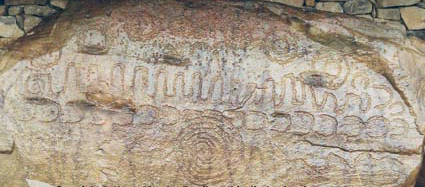
Moon stones, not sun stones (didn't Tovenar say this ages ago? I'm sure he did):
Global vision
Quite a good match, I think. I'm going to have a look for more.
Look at this!


Moon stones, not sun stones (didn't Tovenar say this ages ago? I'm sure he did):
Consider, for example, the great complex of Neolithic artworks at the Boyne Valley UNESCO World Heritage site, named after the ancient River-Goddess Bóann. This was constructed, according to Irish mythology, by the Pre-Indo-European Tuatha Dé Danaan (People of the Goddess Danu), and is archaeologically dated from 4,100 BCE to 2,900 BCE. The complex features over 70 monuments including the three large chambered passage mounds at Newgrange, Knowth and Dowth, dozens of smaller satellite passage mounds, unchambered cairns, tumuli, henges and standing stones, as well as the largest collection of petroglyphic art in Europe....
...calendar stones (including kerbstone SW22 at Knowth shown in the photograph at the top of this page), whose petroglyphic symbols suggest that the ancient Irish astronomers may have been able to synchronise the lunar cycles with the solar year (3).
Global vision
Quite a good match, I think. I'm going to have a look for more.
Equally intriguing are the carved stone balls
found in Scotland and dating from as far back as around 3000bc.
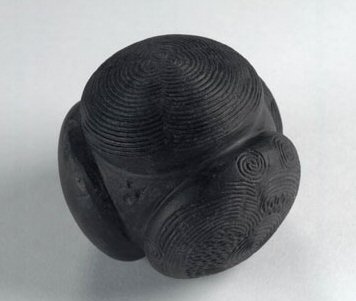
this may be a bit off topic or someone may have mentioned it ...im still reading through everything. But I have always been facinated by all the spirals they made...Ive always wondered if they represent maybe a sound or something along those lines? I am thinking out loud here so correct me if im way off base. Think about the golden ratio its shown up in many ancient ruins and they think they might have actually been aware of it. So if they knew about the golden ratio why not about sacred frequencies or vibrations. How do we depict sound now? alot of squigly lines maybe its their way of drawing sound or music? Also I did read somewhere that the blue stones at stone henge make sound when you strike them, they most likely had these stones too. Thoughts anyone?
reply to post by Stuprimori
Yes those intrigue me too. I'll shamelessly link you to this thread because the same acoustic properties have been uncovered in Scotland's cairns too.
It's possible they were depicting music or sound - certainly there's nothing to convince me they weren't. Also the spirals have been a consistent motif for so long that they must mean something!
But, like the double discs above, the problem is that there is such a gap between the neolithic 'art' and the Pict art -there seems to be nothing in between to demonstrate continuity of themes. Or that's what I'm about to look into anyway, because there just might be...
Yes those intrigue me too. I'll shamelessly link you to this thread because the same acoustic properties have been uncovered in Scotland's cairns too.
It's possible they were depicting music or sound - certainly there's nothing to convince me they weren't. Also the spirals have been a consistent motif for so long that they must mean something!
But, like the double discs above, the problem is that there is such a gap between the neolithic 'art' and the Pict art -there seems to be nothing in between to demonstrate continuity of themes. Or that's what I'm about to look into anyway, because there just might be...
new topics
-
Biden Nationalizes Another 50,000+ Student Loans as He Heads for the Exit
US Political Madness: 11 minutes ago -
An Interesting Conversation with ChatGPT
Science & Technology: 9 hours ago
top topics
-
An Interesting Conversation with ChatGPT
Science & Technology: 9 hours ago, 7 flags -
Biden Nationalizes Another 50,000+ Student Loans as He Heads for the Exit
US Political Madness: 11 minutes ago, 1 flags
active topics
-
Can someone 'splain me like I'm 5. Blockchain?
Science & Technology • 79 • : RustEShackelFord -
US Federal Funding set to Expire December 20th. Massive CR on the way.
Mainstream News • 35 • : IndieA -
Salvatore Pais confirms science in MH370 videos are real during live stream
General Conspiracies • 242 • : Freeborn -
Biden Nationalizes Another 50,000+ Student Loans as He Heads for the Exit
US Political Madness • 0 • : xuenchen -
An Interesting Conversation with ChatGPT
Science & Technology • 17 • : Athetos -
The Truth Behind the Manchester Airport "Police Assault" Video
Social Issues and Civil Unrest • 48 • : SprocketUK -
Drone Shooting Arrest - Walmart Involved
Mainstream News • 33 • : RustEShackelFord -
World's Best Christmas Lights!
General Chit Chat • 15 • : TheInvisibleRedneck -
Covid....... Again.
Diseases and Pandemics • 32 • : DoubleDNH -
Squirrels becoming predators
Fragile Earth • 29 • : Oldcarpy2

